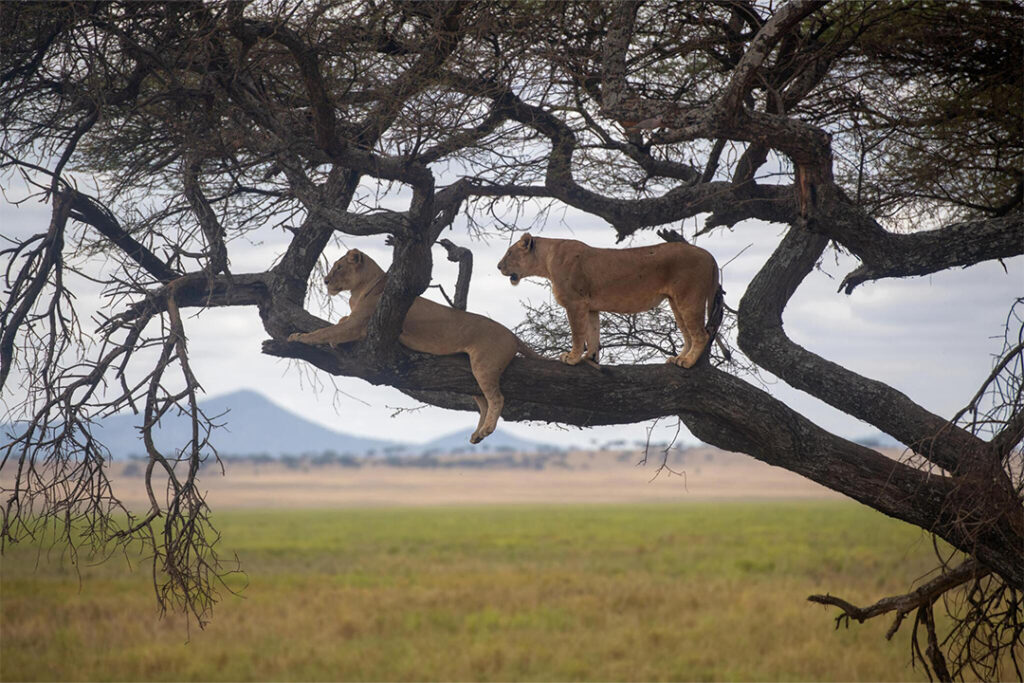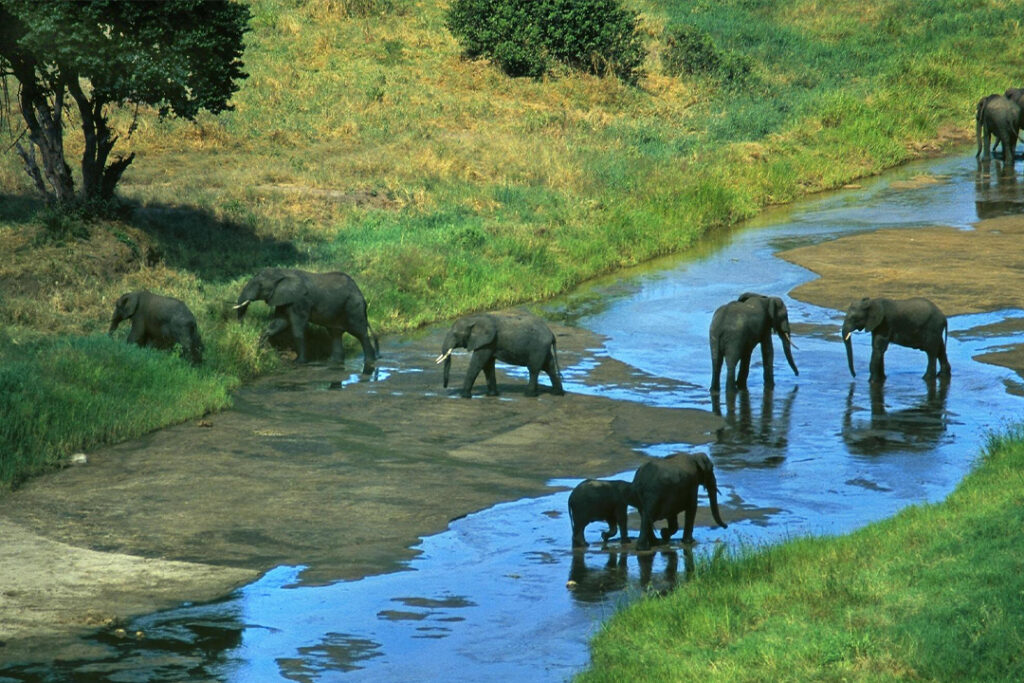TANZANIA NATIONAL PARKS
NGORONGORO CONSERVATION AREA
Ngorongoro Conservation Area
The Ngorongoro Conservation Area (NCA) is a UNESCO World Heritage Site located in northern Tanzania’s Crater Highlands. Covering approximately 8,292 square kilometers, it is renowned for its breathtaking landscapes, diverse wildlife, and significant archaeological sites. The centerpiece of the NCA is the Ngorongoro Crater, the world’s largest inactive volcanic caldera, hosting a remarkable concentration of wildlife, including the Big Five: lions, elephants, leopards, buffalo, and rhinos. Beyond the crater, the area features varied ecosystems such as savannas, woodlands, and forests, which are home to numerous animal species and part of the Great Migration route. Unique to this conservation area is the coexistence of wildlife with the semi-nomadic Maasai pastoralists, who maintain their traditional lifestyle while grazing livestock. The NCA also houses significant archaeological sites like Olduvai Gorge, offering insights into early human history. The Ngorongoro Conservation Area exemplifies a harmonious balance between wildlife conservation, cultural preservation, and sustainable land use.



What Makes Ngorongoro Conservation Area Unique?
The Ngorongoro Conservation Area (NCA) offers a unique tour experience due to its remarkable blend of natural beauty, diverse wildlife, rich cultural heritage, and significant archaeological sites. Here are the key aspects that make tours of the NCA unique:
Ngorongoro Crater: The Ngorongoro Crater is the world’s largest inactive, intact volcanic caldera, providing a dramatic backdrop for wildlife viewing. The crater floor, with its permanent water sources, supports an extraordinary density of wildlife year-round, including the Big Five (lions, elephants, leopards, buffalo, and rhinos)


Why Should You Visit the Ngorongoro?
A visit to Ngorongoro is an unparalleled experience, offering a unique blend of natural beauty, abundant wildlife, and rich cultural heritage. The Ngorongoro Crater, with its stunning landscapes and remarkable biodiversity, provides an exceptional opportunity for wildlife viewing, including the chance to see the Big Five in their natural habitat. Beyond the crater, visitors can immerse themselves in Maasai culture, learning about their traditional way of life and deep connection to the land. With its significant archaeological sites, such as Olduvai Gorge, the Ngorongoro Conservation Area offers a journey through time, tracing the origins of humankind. Whether you’re a nature enthusiast, wildlife lover, or cultural explorer, a visit to Ngorongoro promises an unforgettable adventure filled with wonder and discovery.
When is The Best Time to Visit Ngorongoro Conservation Area
The best time to visit Ngorongoro is during the dry season, from June to October. During this period, the weather is typically dry and sunny, making it ideal for wildlife viewing and outdoor activities. The sparse vegetation allows for excellent visibility, enhancing the chances of spotting animals in the Ngorongoro Crater. Additionally, the Great Migration often occurs during this time, adding to the spectacle of the safari experience.

Ngorongoro Conservation Area
Tanzania is renowned for its stunning natural beauty, including Mount Kilimanjaro, the Serengeti National Park, and Zanzibar’s pristine beaches. It’s also known for its diverse wildlife, particularly the annual Great Migration of wildebeest and other herbivores.
Swahili and English are the official languages of Tanzania. Swahili is widely spoken across the country, while English serves as the primary language for government, business, and education.
Most visitors to Tanzania require a visa, which can be obtained upon arrival at major airports and border crossings. However, it’s advisable to check the specific visa requirements based on your nationality before traveling.
The official currency of Tanzania is the Tanzanian shilling (TZS). Major credit cards are accepted in larger cities and tourist areas, but it’s advisable to carry cash for transactions in more remote areas.

